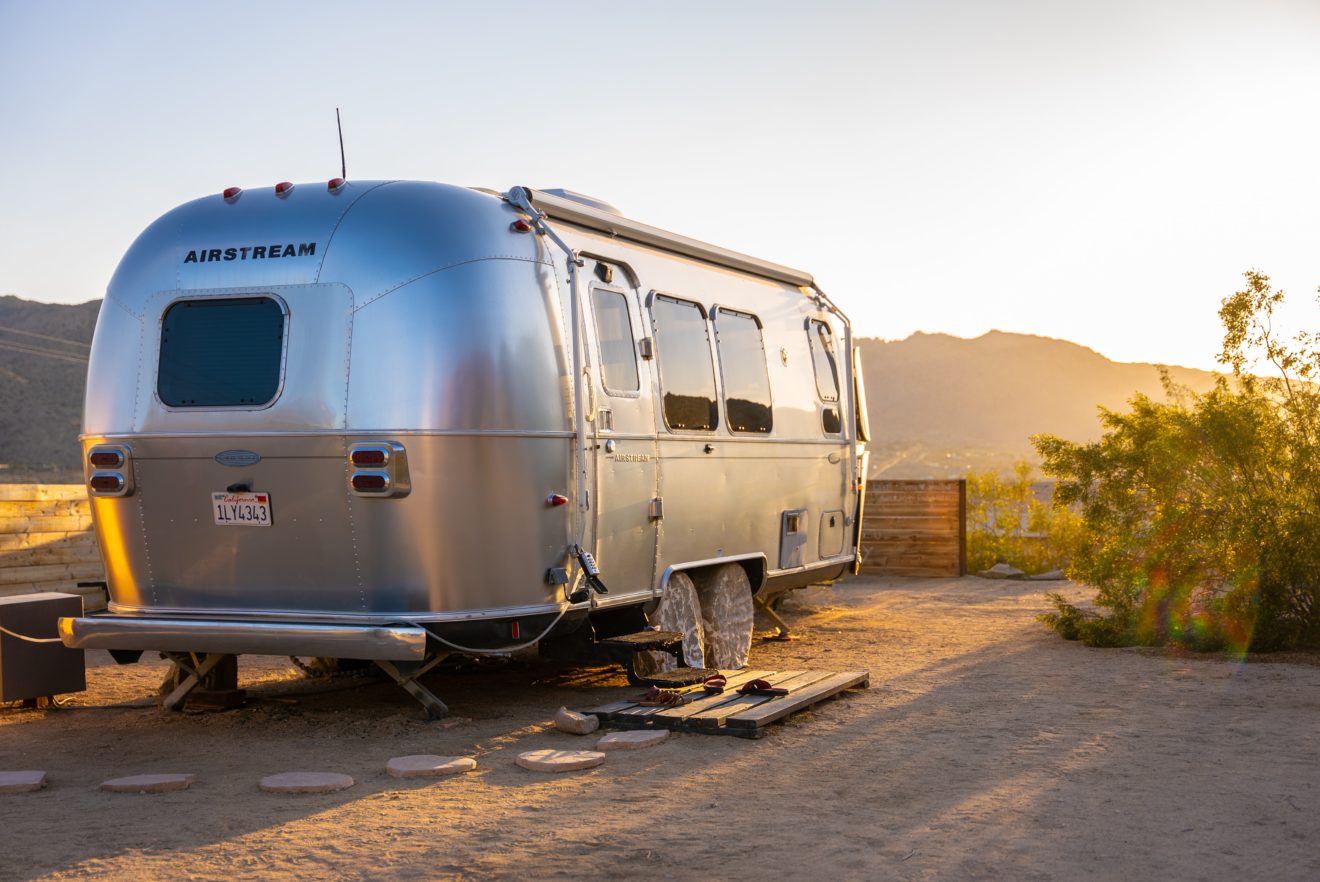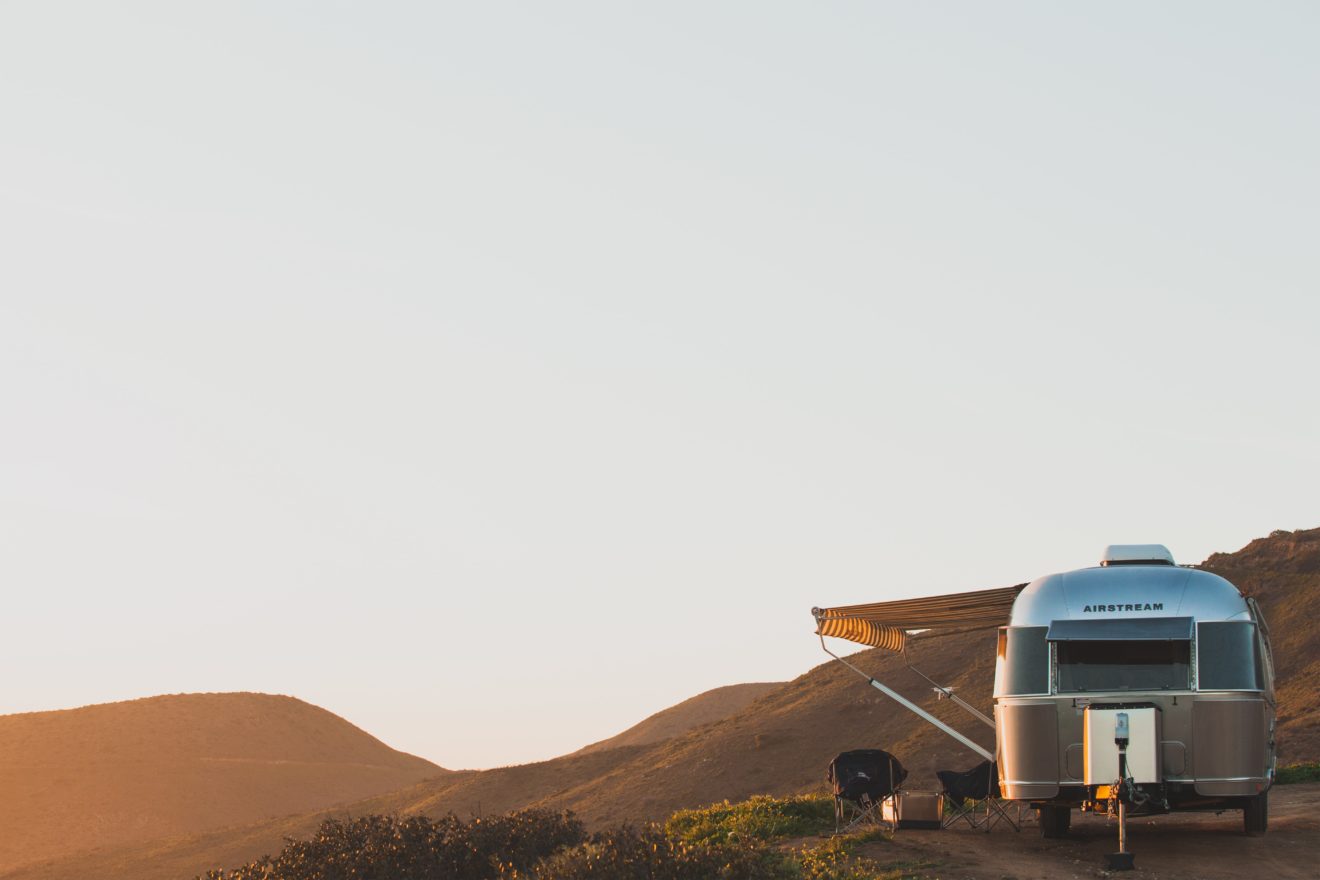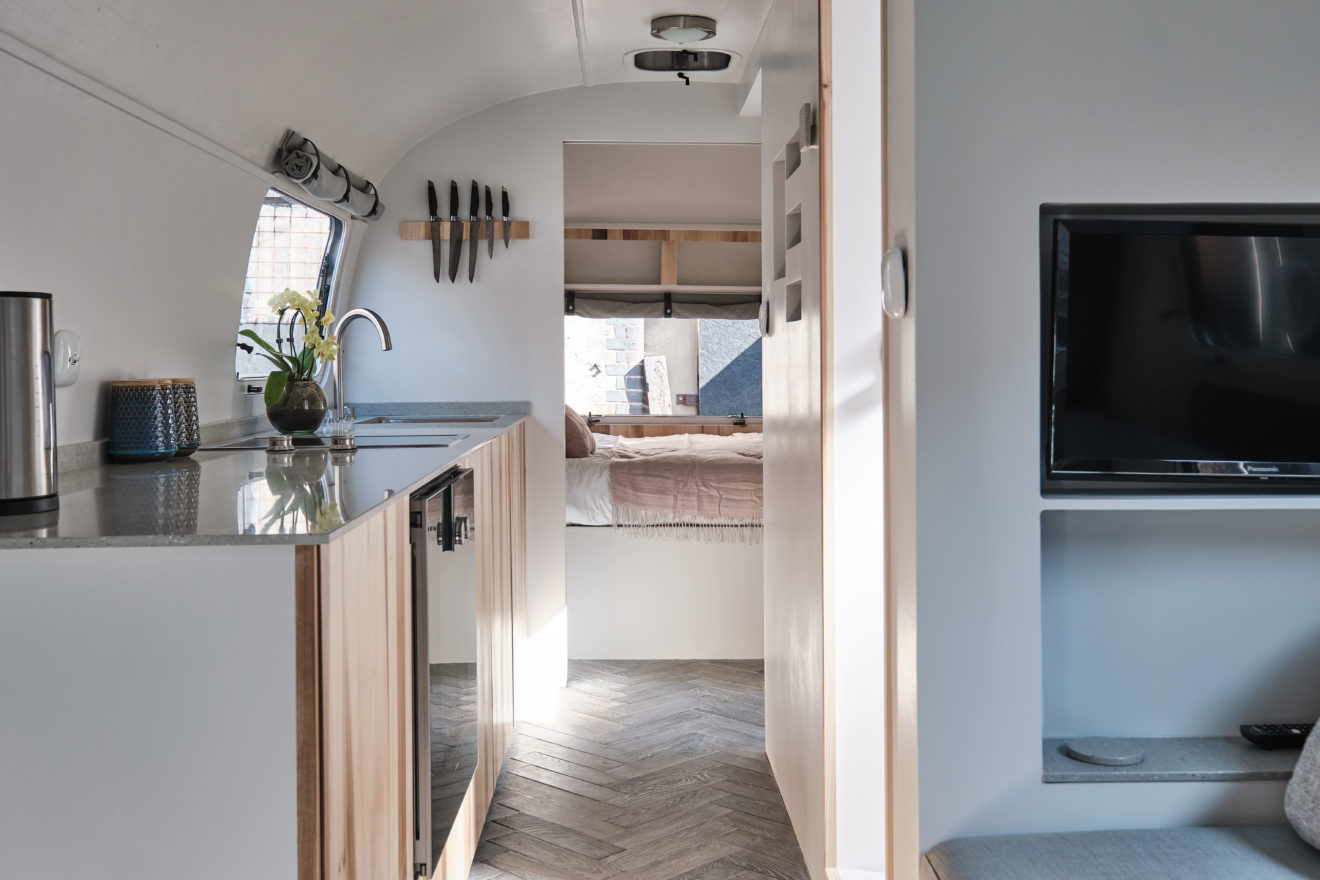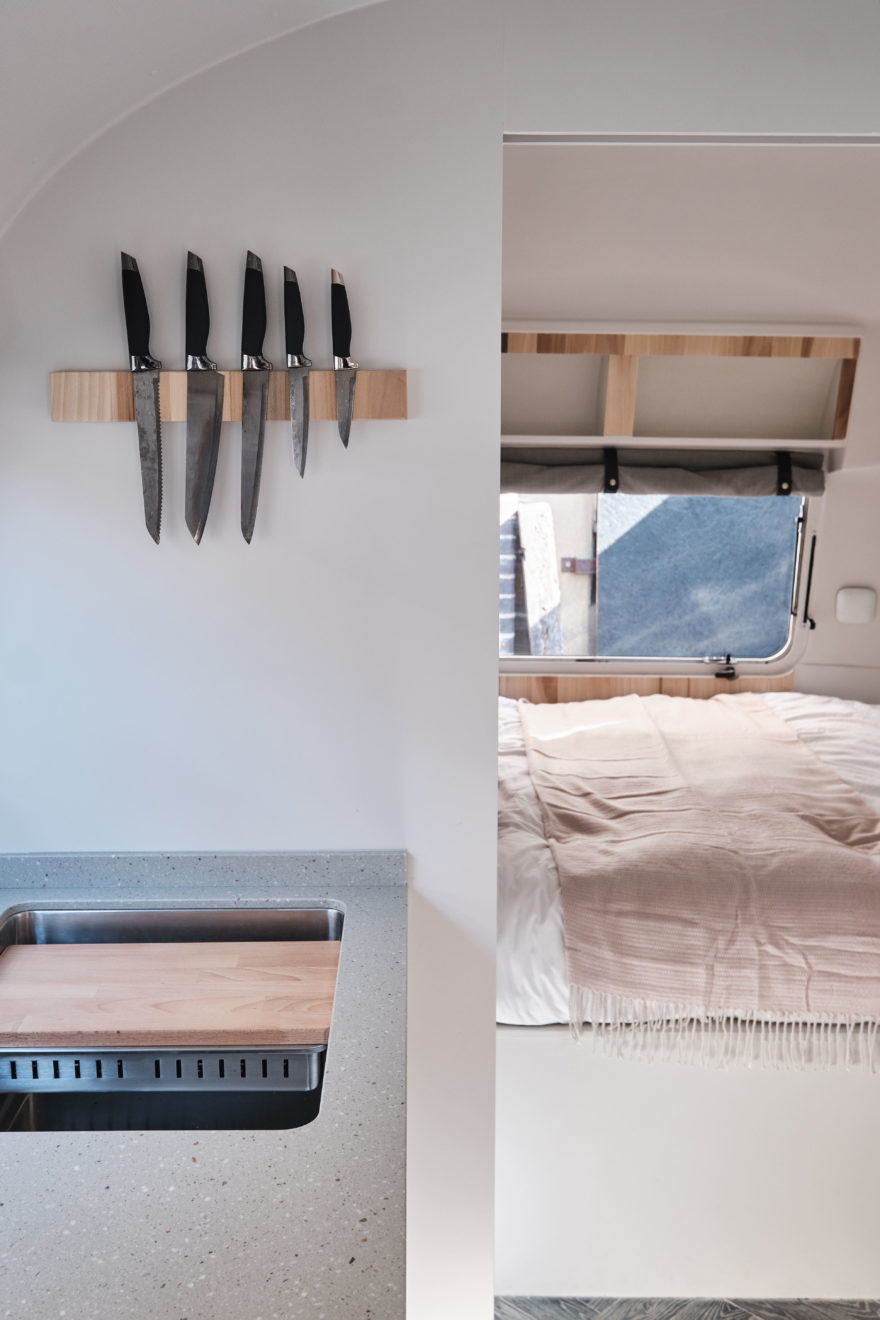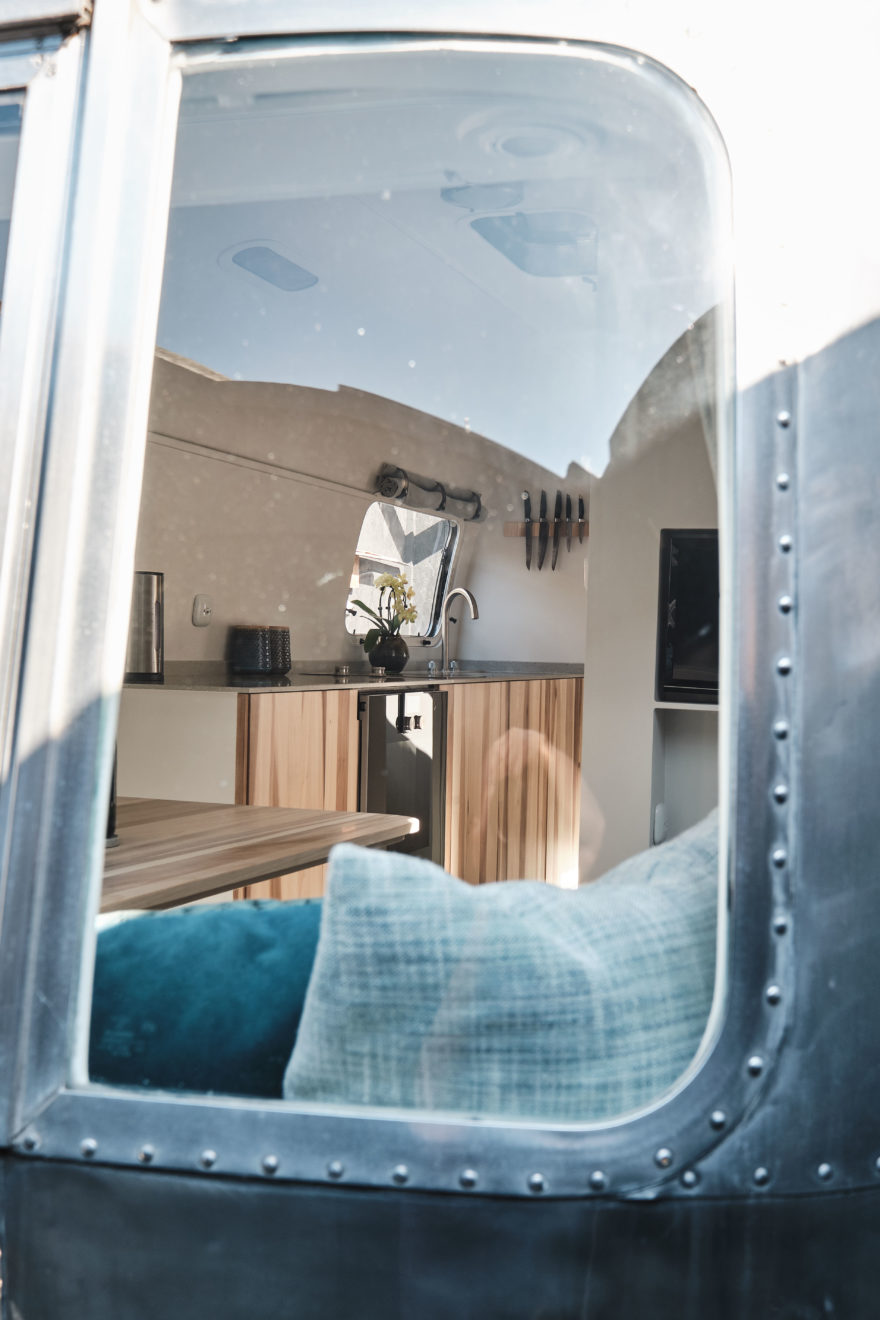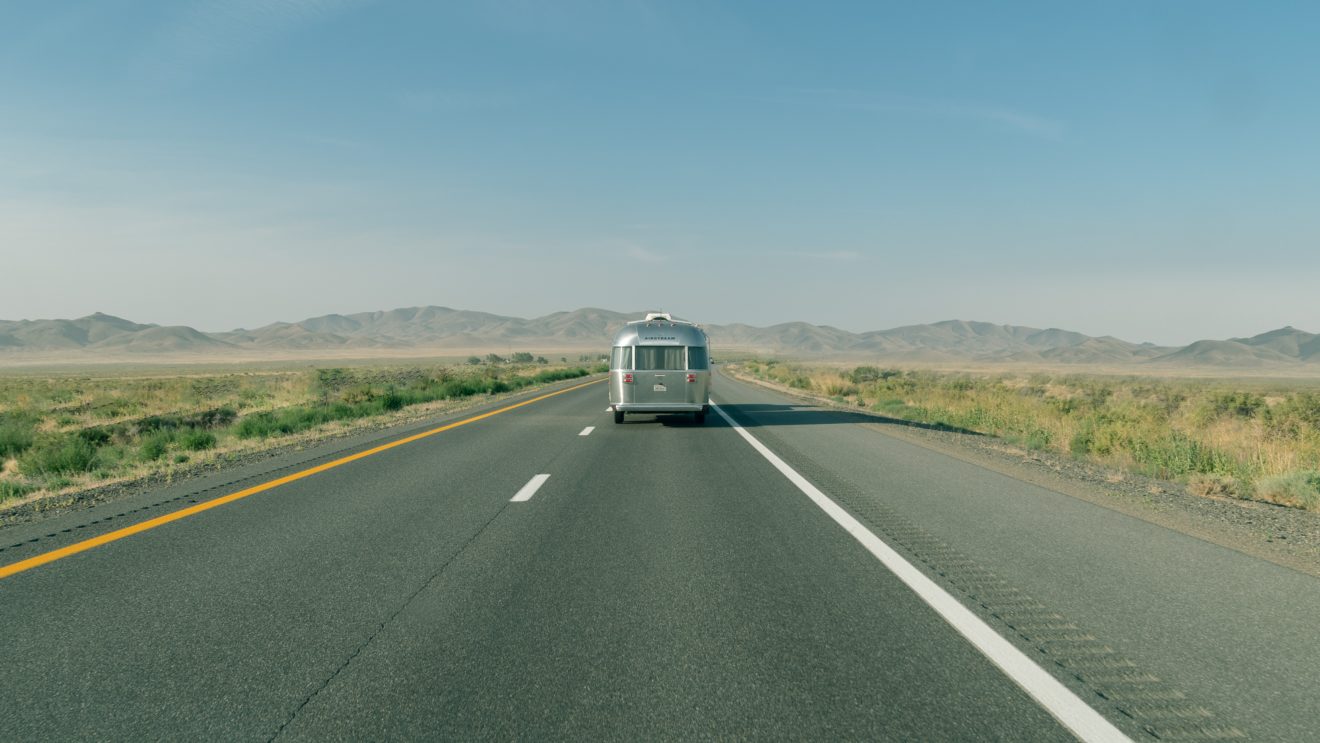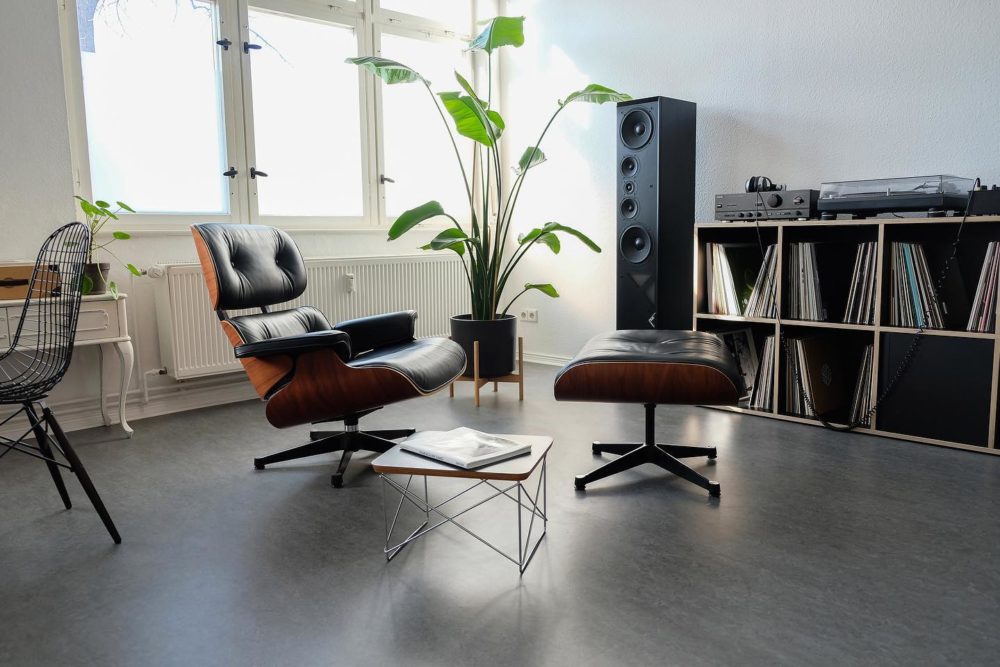Airstream
The Airstream caravan has become a 20th century American classic, quintessentially capturing the aspirations for leisure and adventurous spirit of the time. Instantly recognisable, the Airstream has a distinctive rounded shape and is cased in eye-catching polished aluminium.
The Airstream Trailer Company was founded by Wally Byam in 1931, borne out of a love of travel, an entrepreneurial spirit and an awareness of an opportunity. During the latter half of the preceding decade, Americans were beginning to take to the roads in greater numbers after cars such as Ford’s model T had made car ownership accessible to the growing middle-class. Byam had been inspired to build his own travel trailer, which he wrote a ‘how-to’ article about in Popular Mechanics which drew an enthusiastic response from readers. He began selling sets of his plans, trailer kits and complete trailers which he built in his back garden, all leading to the foundation of the company.
Byam’s trailers were all built from Masonite, a type of engineered hardboard, and it was Hawley Bowlus, an aircraft and automobile designer, who developed the first riveted aluminium trailer – the ‘Road Chief’ – in 1934. A couple of years later, the Airstream Trailer Co. introduced its first aluminium-clad travel trailer, the ‘Clipper,’ recognisable as the Airstream’s we are familiar with today. The size and shape are similar to Bowlus’ Road Chief, but Byam’s version has the door located on the side instead of the front.
The semi monocoque, riveted aluminium body was more similar to aircraft of time than cars and was named after the first trans-Atlantic seaplane. The Clipper was an instant success with the company struggling to keep up with demand. The original model had one bedroom but could sleep four, due to the ability to convert the tubular steel-framed dining area into a bed. It contained its own water supply, was fitted with electric lights and even had ‘air conditioning’ which involved the use of dry ice.
After temporarily closing the company during World War II, the post-war economy boomed and by 1948 demand had once again skyrocketed, cementing the Airstream as the recognisable design classic it is today.

